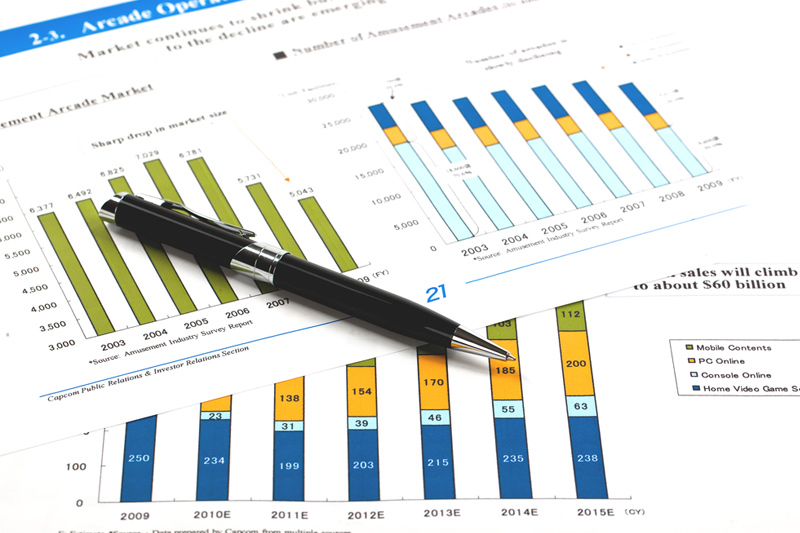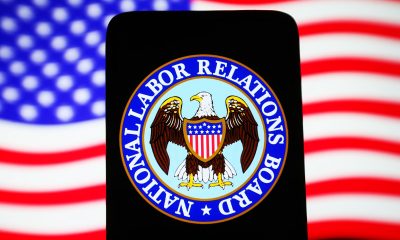Investing
Instant View: Bank stocks tank, markets rethink rate-hike path

© Reuters. People gather outside of the Silicon Valley Bank (SVB) headquarters in Santa Clara, California, U.S. March 10, 2023. REUTERS/Nathan Frandino
(Reuters) – Global banking shares plunged on Monday as moves by the United States to guarantee deposits at collapsed tech-focused lender Silicon Valley Bank failed to reassure investors that other banks remain financially sound.
Europe’s STOXX banking index fell 5.8%, having shed 3.78% on Friday, leaving it on track for its biggest two-day fall since March 2022, soon after Russia invaded Ukraine.
Commerzbank AG (OTC:) fell as much as 12.7%, while Credit Suisse Group AG briefly hit a new record low after falling more than 15%.
U.S. banks also declined in pre-market trading, with Bank of America (NYSE:) down 3.9%. Smaller lenders remained under pressure with First Republic Bank (NYSE:) plunging around 60%.
HSBC bought the UK arm of stricken SVB for a symbolic one pound, rescuing a key lender for technology start-ups in Britain and helping curb the fallout from the biggest bank collapse since the financial crash.
Yields on safe-haven government bonds such as U.S. Treasuries and German Bunds fell sharply, while money markets quickly dialed back bets on the scope for further rate hikes from the Federal Reserve and the European Central Bank.
MARKET REACTION:
STOCKS: European banking stocks were last down 6.2%, UK banks fell 4.8%. U.S. stock futures reversed early gains and were down 0.75%. Credit Suisse shares hit a new record low. BONDS: U.S. Treasury two-year Treasury yields were down 43 bps, set for their biggest three-day fall since 1987. Germany’s two-year bond yield fell over 53 bps and was set for its biggest one-day fall since 1995.
FOREX: The dollar was down over 1% versus the yen, the euro was 0.57% higher.
COMMENTS:
ART HOGAN, CHIEF MARKET STRATEGIST, B. RILEY WEALTH, NEW YORK
“I think the authorities moved rapidly to shore up confidence and that was the right thing to do.”
“So with that as a backdrop and in a market that was pretty jittery coming up to its worst week of the year, certainly the potential for us to bounce a bit especially in the sectors outside of financials is there.”
“But remember, it’s also a week that is going to be littered with economic data which will likely shape our opinion of what the Fed will do at its next meeting.”
“So we’ll be keeping a close eye on things like CPI, which comes out on Wednesday, and PPI and then and a host of other pieces of economic data and all of that will be seen through the lens of what it means for monetary policy. It’s going be a busy week for sure.”
“There’s another full week of data to look at as well, think that’s most likely why they’ll stick to their 25 basis point cadence because a lot of that data largely got ignored last week because of the SVB situation.”
“I think what’s really going on is we’re finding out in real time what the risk of rising interest rates at such a fast pace can do to the balance sheets of some of the regional banks.”
“Every regional bank has sort of its own unique exposure to different part of the market and that’s why they are set up that way.”
“For example, if you’re a regional bank that’s exposed to commercial real estate, well, then office real estate isn’t a positive right and back in the selloff in the energy crisis you saw all the regional banks in Texas come under pressure because of their exposure to oil.”
“So right now investors are trying to look at the whole group and see which one has the most potential for the most negative exposure. SVB obviously had exposure to VCs which are under pressure now due to a rising rate environment and low dealmaking environment. But it is going to be case by case for regional banks.”
IAN LYNGEN, HEAD OF RATES STRATEGY, BMO CAPITAL MARKETS, NEW YORK
“Given the severity of the recent developments (i.e. largest bank failure since 2008) as well as the pace, if the FOMC were meeting today (which it is not), it would most likely pause to give the situation time to stabilize and allow regulators and investors time to reassess. However, there is more than a week until Powell announces the Fed’s next move – as well as Tuesday’s CPI release. While our baseline cynicism leaves us skeptical that the situation will quickly resolve in favor of enough stability to allow the Fed’s to immediately continue with a 25 bp hike next week, we’re certainly of the mind that if the Committee wants to signal its inflation fighting resolve, staying the course is the most prudent approach. That being said, taking a breather in March to gain a better understanding of the contagion risk with the intention to restart the journey to terminal in May has its merits as well. We’re leaning toward the latter at the moment.”
RANDY FREDERICK, MANAGING DIRECTOR OF TRADING AND DERIVATIVES, CHARLES SCHWAB, AUSTIN, TEXAS.
“I think there’s concern out there that what happened to SVB could spillover to other banks and when there’s uncertainty like this, people get scared and when people get scared the natural reaction tends to be to hit the ‘sell’ button.”
“Regional banks are obviously smaller and not as well capitalized and the failures we’ve seen so far have been more regional than global. If you are going to have contagion fears then it tends to be against companies that investors rightly or wrongly have perceived to fail.”
“We haven’t seen a major bank like a Citigroup (NYSE:) or Wells Fargo (NYSE:) or JPM fail so I think smaller banks are likely the most vulnerable.”
“We’ve seen substantial decline in the probabilities of what kind of rate hikes we are going to get. Last week, I was expecting a half percent rate hike but those odds have now dropped all the way down to only a 50% probability of a one quarter point hike, which at this point means that we’re probably not going to get any rate hike.”
“At the moment, the odds are that there won’t be a hike next week. But that could change and it all depends on how the fallout goes, if the banking system calms down, the markets settle down then I think those probabilities could go back up.”
“Guaranteeing depositors is important, I think that’s probably the most important thing.”
“What I think would probably be on the table is perhaps increasing the amount of FDIC insurance on cash deposits. That $250,000 level has been set for a very very long time and it has not increased given changes in inflation and the value of the dollar over many years so I’m frankly surprised that it has been so low.”
“So I would expect that they would at least review that number down the road, not that would necessarily prevent what has happened but would give people the confidence that they could hold larger cash deposits. Not sure that would happen but possibly something that will be discussed.”
MARK DOWDING, CHIEF INVESTMENT OFFICER, BLUEBAY ASSET MANAGEMENT, LONDON:
“We don’t think that a lot of the issues that are impacting U.S. banks are ones that will be manifested in European banks.
“Because of the funding and accounting practices in Europe compared with the U.S., we are less concerned.
“However, there is a sense of contagion and where we see a repricing around financials is leading to a repricing across markets.
“We are not changing our positioning on banks across our funds, and tend to be more constructive on European banks versus the U.S.”
JEROME LEGRAS, HEAD OF RESEARCH AT AXIOM ALTERNATIVE INVESTMENTS, PARIS
“Market moves are a bit exaggerated because European banks have a much better interest rate risk management framework than regional U.S. banks. But it’s also a good thing that people are waking up to interest-rate risk. It’s definitely something that has to be monitored and some investors were a bit complacent, especially in the U.S. or Japan.
“We’ll see how it changes the Fed path, but I definitely can’t escape the feeling that one reason for ditching the moral hazard rhetoric and offering the facility to banks is that the Fed wants to be free to continue to hike should it want to and not be constrained by banks’ balance sheets.”
JAN VON GERICH, CHIEF ANALYST, NORDEA, FINLAND
“The ECB certainly is not going to stop on the basis of what we know now. If the markets aren’t cooled down, then maybe they will have to reconsider.
“I think on the margin the Fed will press ahead by 25 basis points next week. But the discussion of whether they will hike by 25 or 50, that is gone.
“The rate hikes will continue. Of course, what happens further out, if it’s right to take out some of the pricing further out, there is of course a case for that.
“If markets remain in a crisis mood, or in a very volatile set up, then the Fed doesn’t want to increase that volatility even further. But for now I think that 25 bps next is a reasonable baseline.”
PIET CHRISTIANSEN, CHIEF ANALYST, DANSKE BANK, COPENHAGEN:
“This move we’re seeing right now is more of a stress indication that anything else.
“Markets are definitely saying well, there’s liquidity stress in the system right now.
“I think investors generally just sit back and see where the dust settles here. Because these moves seem so strong that… I really question how much liquidity there is behind it.
“I think the (ECB) communication on Thursday is still going to be for a 50 basis point rate hike, the underlying inflation problem is still there.
“But I think there’s going to be much more emphasis on the outlook from Lagarde on Thursday than if SVB hadn’t happened.
“So I think the risks are definitely bigger now than before.
“You never know after the ECB but for now, I don’t see a reason to change the 4% rate call.”
Read the full article here

-

 Personal Finance6 days ago
Personal Finance6 days agoGas prices drop as demand for driving fizzles out: AAA
-

 Investing6 days ago
Investing6 days agoCrowdstrike CEO Responds to Causing Largest IT Outage in History
-

 Side Hustles6 days ago
Side Hustles6 days agoHow to Build A Startup, From an Early Lyft, Twitch Investor
-

 Passive Income6 days ago
Passive Income6 days agoThe Top 5 AI Tools That Can Revolutionize Your Workflow and Boost Productivity
-

 Passive Income4 days ago
Passive Income4 days agoNLRB Drops Expanded Joint Employer Appeal
-

 Side Hustles6 days ago
Side Hustles6 days agoJake Paul: Mindset Hacks, Mike Tyson Fight, Embracing Fear
-

 Investing6 days ago
Investing6 days agoBoeing to supply E-7 in first major win since plea deal By Reuters
-

 Side Hustles5 days ago
Side Hustles5 days ago10 Effective Growth Marketing Strategies for Your Startup


















